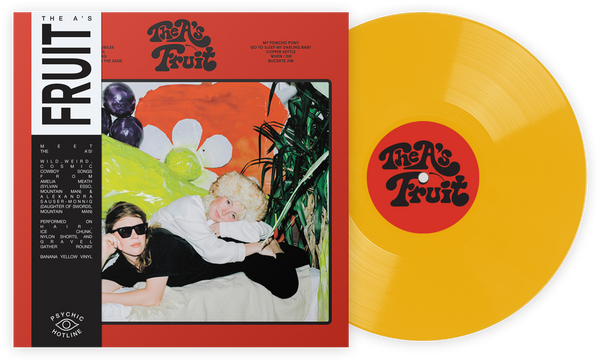Ada pilihan film musik dan dokumenter yang sangat luas di Netflix, Hulu, HBO Go, dan seterusnya. Namun, sulit untuk menentukan mana yang benar-benar layak untuk 100 menit Anda. Watch the Tunes akan membantu Anda memilih dokumenter musik mana yang layak ditonton setiap akhir pekan. Edisi minggu ini membahas dokumenter Peelander-Z Mad Tiger, yang dapat ditemukan di Netflix.
As a civilian in the music industry, I can only imagine the weird internal workings that happen to members of a band as they bounce from show to show on tour, to say nothing of the creative give and take that goes into making and recording music. I get stressed out just thinking about it, to be honest. There are memorable examples of bands imploding from tensions that built up over years of course, small slights that fester and metastasize until they choke out all forward momentum. Oasis, the Eagles, the Smiths, and the Beatles all come to mind more or less immediately. If you’re looking for that level of drama writ small, though, check out the rise, fall and resurrection of Peelander-Z as charted in the 2015 documentary Mad Tiger.
More than most groups, Peelander-Z needs a bit of backstory. As you might be able to ascertain just from their name, this is a band that embraces silliness rather seriousness. A self-described “Japanese Action Comic Punk” band, they claim to hail from the Z area of Planet Peelander. Imagine what GWAR would look and sound like if they were professional wrestling obsessed art students born in Japan but who met in New York, and you’re pretty much there. They play a tricky blend of spunky hardcore pop punk that’s undeniably infectious, but their over-the-top stage shows are the real draw. In one night you’ll get acrobatic stunts like the bassist, Peelander Red, hanging upside down by his feet from overhead pipes when he’s not riding around on a unicycle in a goofy homemade squid costume. And this is all before audience members are brought on stage and the “human bowling” happens. It’s a high energy spectacle that has kept them on their touring grind for over fifteen years by the time that the filmmakers Jonathan Yi and Michael Haertlein showed up to document the group, which is when things start to unravel.
It’s unclear if the cameras showed up primed with the intention of capturing a band experiencing an intense set of crossroads, but regardless we get to see two long-time members, Peelander Red (bassist Kotaro Tsukada) and Peelander Green (drummer Akihiko Naruse), resign their positions. The driving force of the group has always been lead singer and guitarist Peelander Yellow (Kengo Hioki) who is having trouble balancing his role as frontman with the necessary concessions and compassion that go with that responsibility. The whole project is clearly his vision, but you get the sense that he’s really bad at marshalling his planet Peelander troops. Red and Green, like Peelander Blue before them, are leaving the group pretty much due to the legitimate concern that the band’s momentum seems to have plateaued after nearly two decades of existence, and no one’s getting any younger.
As a document of the Peelander-Z and its history, this thing is fascinating. Here we have a group that relies on an entertaining conceit (the whole Planet Peelander thing) and you wonder if it’s going to still be interesting to track them once the protective ridiculousness of their costumes is stripped away, but hoo boy it ends up hitting some tender buttons once everyone’s guard comes down. The high concept of the band is loaded with some guarded secrets (for instance: Peelander Yellow and Peelander Pink, Yumiko Kanazaki, are husband and wife) which are fun to experience as they’re revealed, but the deepest secret it seems is how fraught some of these relationships are once you get past the monochromatic novelty these weirdos have passionately embraced. The depth of the revelations on interpersonal and musical relationships that follow, as well as the casualness with which they’re delivered, was honestly a bit shocking coming from these guys who exist on stage as caricatures of basic crayon colors.
The effect of Mad Tiger, overall, is unexpectedly bittersweet. There’s a palpable push and pull between that old cliche of whether it’s better to burn out than it is to fade away. One by one musicians peel off having chosen the former, leaving only Peelander Yellow to soldier on towards an increasingly faded future. It can’t be any other way though. You get the idea that he can’t do anything else, much less has any inclination to put his energies towards something that isn’t Peelander-Z. Ultimately, this is the hill he’s chosen to die on, for better or worse. As you can see from their recent appearance on The Gong Show (because of course they’re on The Gong Show), they’re doing just fine:
There are a couple of moments where Yellow attempts to grab control of the film as it’s being recorded, pitching bits that would substitute less than flattering sequences that were just shot. Interestingly, the moments that are less than flattering are ones that are further evidence of how controlling and manipulative he is. It’s hard to imagine that he was incredibly happy with the finished product here, but the image that’s presented is one of a complex otherworldly organism that is in the middle of an intense and stressful mutation process. It’s messy, but you can’t look away, especially from the front row seat the filmmakers give us.
Chris Lay is a freelance writer, archivist, and record store clerk living in Madison, WI. The very first CD he bought for himself was the Dumb & Dumber soundtrack when he was twelve and things only got better from there.
Kulübe Katılın!
Şimdi Katıl, Başlangıç Fiyatı: $44
Diskon eksklusif 15% untuk guru, mahasiswa, anggota militer, profesional kesehatan & petugas tanggap darurat - Dapatkan Verifikasi Sekarang!












